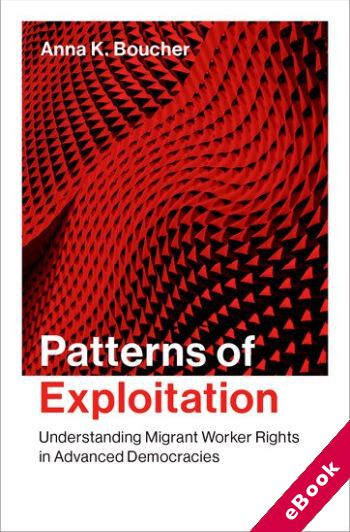
The device(s) you use to access the eBook content must be authorized with an Adobe ID before you download the product otherwise it will fail to register correctly.
For further information see https://www.wildy.com/ebook-formats
Once the order is confirmed an automated e-mail will be sent to you to allow you to download the eBook.
All eBooks are supplied firm sale and cannot be returned. If you believe there is a fault with your eBook then contact us on ebooks@wildy.com and we will help in resolving the issue. This does not affect your statutory rights.
Numbering an estimated 164 million globally, migrant workers are an essential component of contemporary businesses. Despite their number and indispensability in the global economy, migrant workers frequently lack the legal protections enjoyed by other workers. They work in sectors where jobs are isolated, and they lack advocates and trade union representation. They may also be undocumented, further eroding their capacity to advance their rights. Migrant workers suffer workplace violations that range from underpayment of wages and unsafe work conditions to sexual assault and industrial manslaughter. How much does this exploitation vary across different countries? What explains differences and similarities among migrant worker destinations?
In Patterns of Exploitation, Anna K. Boucher answers these questions by looking at workplace violations across four major immigration countries: the United States, Australia, Canada, and the United Kingdom. Incorporating interviews, the Migrant Worker Rights Database, and in-depth analysis of court cases, Boucher uses legal storytelling to document individual migrant experiences and assess the patterns of exploitation that emerge in case narratives. Migrant experiences vary across ethnicity, gender, occupational sector, visa status, trade union membership, and enforcement policy, as well as the industrial relations systems within a destination country. Boucher lays out the kinds of exploitation to which migrants are subjected, the patterns discernible within migrant workers' experiences, and the solutions that can best protect migrants against workplace violations. This unique mixed-methods approach provides a novel understanding of migrant workplace violations across a variety of immigration contexts.